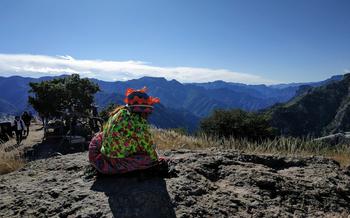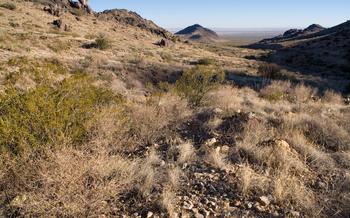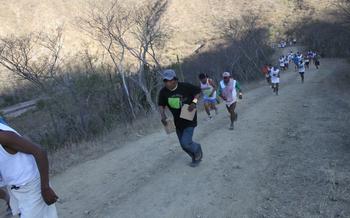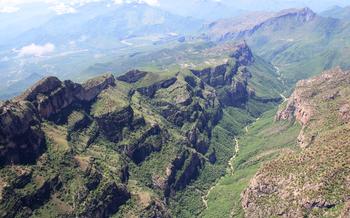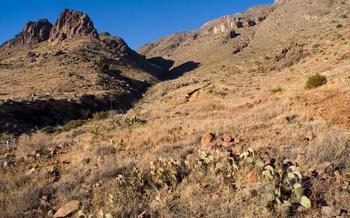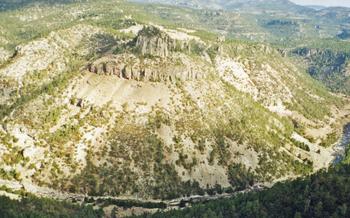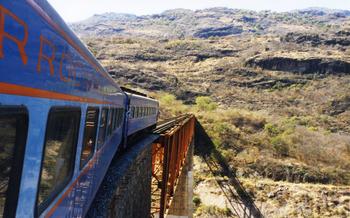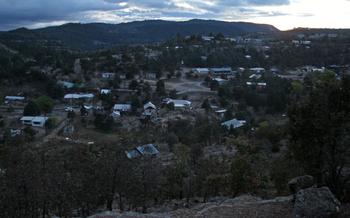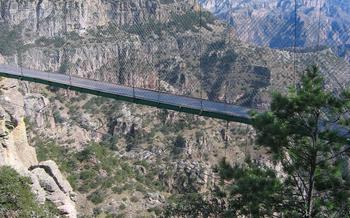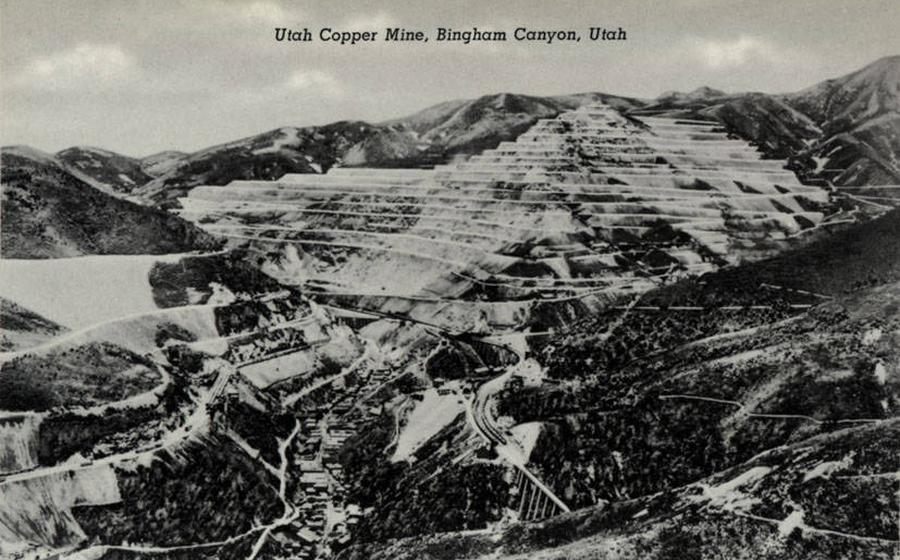
Rukiraso Waterfall
- Copper Canyon Overview
- Getting to Copper Canyon
- Exploring the Copper Canyon
- Must-see viewpoints and landmarks
- Hiking trails and their difficulty levels
- Wildlife spotting opportunities
- Visiting the Rukiraso Waterfall
- Immerse in the Local Culture
- Accommodation Options
- Dining in Copper Canyon
- Safety Considerations
- Things to Avoid
- Photography Tips
- Souvenirs and Handicrafts
- Language and Communication
- Travel Budget
- Insider Tip: Unveiling the Hidden Charms of Copper Canyon
Copper Canyon Overview
Nestled in the heart of Chihuahua, Mexico, the Copper Canyon is an awe-inspiring natural wonder that rivals the grandeur of the Grand Canyon. This network of canyons, collectively known as Barrancas del Cobre, is a testament to the power of nature and boasts a rich tapestry of landscapes, cultures, and traditions.
With a history dating back to ancient civilizations, the Copper Canyon has served as a passageway for indigenous communities, explorers, and adventurers alike. Its name originated from the greenish hue of the canyon walls, a result of copper oxide deposits.
The Copper Canyon spans an area of over 25,000 square kilometers, making it one of the largest canyon systems in the world. It is comprised of six distinct canyons, each with its unique character and charm. The diverse topography ranges from towering cliffs and deep gorges to lush forests and cascading waterfalls.
A visit to the Copper Canyon offers an escape into a realm of natural beauty, cultural heritage, and adventure. Whether you seek tranquility amidst breathtaking landscapes, a thrilling hiking experience, or an immersion into the vibrant traditions of indigenous communities, the Copper Canyon promises an unforgettable journey.
Getting to Copper Canyon
Transportation Options:
Reaching the Copper Canyon requires a combination of transportation modes. The most common starting point is the city of Los Mochis, which has an international airport and serves as a gateway to the region. From Los Mochis, travelers can take a scenic train ride on the Chihuahua al Pacífico railroad, known as "El Chepe." This train journey offers breathtaking views of the canyon and is a popular choice among tourists. Alternatively, buses and rental cars are available for those who prefer a more flexible itinerary.
Recommended Starting Point:
Los Mochis is the recommended starting point for exploring the Copper Canyon due to its convenient transportation connections and proximity to the canyon's main attractions. From Los Mochis, travelers can easily access the train station, bus terminal, and rental car agencies, making it a hassle-free starting point for their adventure.
Tips for a Smooth Travel Experience:
To ensure a smooth travel experience, it is advisable to book train tickets in advance, especially during peak tourist season. Additionally, renting a car allows for greater flexibility and freedom to explore the canyon at your own pace. However, driving in the region requires caution due to winding roads and occasional road hazards. It is also essential to carry necessary travel documents, including a valid passport and visa (if required) to avoid any inconveniences at border crossings or checkpoints.
Exploring the Copper Canyon
The Copper Canyon offers a wealth of breathtaking sights and thrilling experiences for adventure enthusiasts. Embark on a scenic journey aboard El Chepe, the Chihuahua al Pacífico train, and marvel at the mesmerizing panoramas of the canyon as it snakes through tunnels and bridges. Alight at various stops along the route to explore picturesque towns, delve into local culture, and soak in the region's unique charm.
Must-see viewpoints and landmarks
-
Mirador de los Monjes: Perched atop a towering cliff, this viewpoint offers panoramic vistas of the canyon's vast expanse, with its rugged cliffs, verdant valleys, and winding rivers.
-
Cascada de Basaseachi: Mexico's tallest waterfall plunges over 800 feet into a verdant gorge, creating a mesmerizing spectacle of cascading water and mist.
-
Valle de los Hongos: Discover a whimsical landscape dotted with towering rock formations resembling giant mushrooms, a result of centuries of erosion.
Hiking trails and their difficulty levels
-
Copper Canyon Trail: This challenging multi-day hike traverses the length of the canyon, offering an immersive experience of its diverse ecosystems and stunning scenery.
-
Rim Trail: A moderately challenging trail that follows the canyon's rim, providing breathtaking views and opportunities for wildlife spotting.
-
Urique Canyon Trail: A relatively easy trail that leads to the Urique River, where you can swim, kayak, or simply relax and enjoy the tranquility of nature.
Wildlife spotting opportunities
The Copper Canyon is home to a diverse array of wildlife, including black bears, mountain lions, eagles, hawks, and a variety of reptiles and amphibians. Keep your eyes peeled and your camera ready for a chance to capture these magnificent creatures in their natural habitat.
Visiting the Rukiraso Waterfall
Whether you prefer to embark on a guided tour or explore the waterfall independently, both options offer unique experiences. Guided tours provide insightful commentary, ensuring you learn about the history, geology, and cultural significance of the waterfall. They often include transportation, meals, and other amenities, making it a hassle-free experience.
If you're up for a more adventurous and self-reliant journey, opt for self-guided exploration. While you won't have a guide to narrate the history, you'll have the freedom to set your own pace, wander at your leisure, and soak in the tranquil ambiance of the waterfall without distractions. Just remember to plan your trip meticulously, bring essential supplies, and be prepared for any unforeseen challenges that may arise along the way.
No matter which option you choose, the best time to visit Rukiraso Waterfall is during the rainy season (July to September) when the water flow is at its peak, creating a mesmerizing spectacle. The surrounding landscape transforms into a lush green paradise, and the air is filled with the refreshing mist of the waterfall.
Pack comfortable hiking shoes, a raincoat or poncho, and a camera to capture the breathtaking beauty of the waterfall. Don't forget to bring snacks, water, and a first-aid kit for any minor emergencies. To fully immerse yourself in the experience, consider staying overnight at one of the nearby ecolodges or campsites, allowing you to witness the waterfall's ethereal beauty under the starry sky.
Immerse in the Local Culture
The Copper Canyon region is home to a diverse mix of indigenous communities, each with its own unique traditions and customs. Visitors can immerse themselves in the local culture by visiting indigenous villages, attending traditional festivals, and interacting with the friendly locals. Some of the most notable indigenous groups in the area include the Tarahumara, the Mayo, and the Yaqui people.
The Tarahumara, also known as the Rarámuri, are renowned for their long-distance running abilities and their deep connection to the land. Visitors can learn about their fascinating culture by visiting their villages, hiking with them through the canyons, or attending one of their colorful festivals.
The Mayo people are known for their intricate beadwork and their traditional music, which is often performed on handmade instruments. Visitors can purchase beautiful Mayo handicrafts in local markets or attend one of their lively fiestas to experience their vibrant culture firsthand.
The Yaqui people are renowned for their fierce independence and their strong sense of community. Visitors can learn about their history and traditions by visiting their museum in the town of Vícam or by attending one of their traditional ceremonies.
Accommodation Options
Types of Accommodation: The Copper Canyon region offers a range of accommodation options to suit different budgets and preferences. From rustic cabins and cozy bed and breakfasts to luxurious hotels and eco-lodges, there's something for every traveler.
Price Range and Amenities: Prices vary depending on the type of accommodation, location, and amenities offered. Budget-friendly options start from around $20 per night for a basic room in a hostel or guesthouse. Mid-range hotels typically cost between $50-$100 per night and offer more amenities such as private bathrooms, air conditioning, and Wi-Fi. Luxury accommodations, including upscale hotels and resorts, can range from $100 to over $500 per night and often feature stunning views, private balconies, and exclusive amenities like spas and swimming pools.
Tips for Booking Accommodations: To secure the best deals and avoid disappointment, it's advisable to book your accommodation in advance, especially during peak tourist season. Consider the location carefully, as some accommodations may be situated far from the main attractions and require additional transportation. Read reviews and compare prices from different booking platforms to find the best value for your money.
Dining in Copper Canyon
Copper Canyon offers a diverse culinary scene, blending traditional Mexican flavors with unique regional influences. From family-run restaurants to upscale establishments, there's something to suit every taste and budget. Local cuisine is a must-try, featuring dishes like enchiladas, tacos, and burritos, often prepared with fresh, locally sourced ingredients. Don't miss the opportunity to sample sopapillas, a traditional fried dough served with honey or cinnamon sugar. For vegetarians and vegans, there are plenty of options available, such as nopales (cactus) dishes, huitlacoche (corn fungus), and a variety of fresh fruits and vegetables. Budget-friendly dining options can be found in local markets and street stalls, where you can savor authentic Mexican flavors at a fraction of the cost.
Safety Considerations
As with any travel destination, safety should be a top priority when exploring the Copper Canyon. Here are some tips to ensure a safe and enjoyable trip:
-
Be aware of your surroundings: The Copper Canyon is generally safe, but it's essential to be vigilant, especially in crowded areas or when hiking alone.
-
Protect your belongings: Keep your valuables close and avoid leaving them unattended in public places.
-
Avoid hiking alone: If you plan to go hiking, it's best to do so with a group or a guide.
-
Be prepared for emergencies: Carry a first aid kit, a flashlight, and a map of the area. Make sure your phone is fully charged and has emergency contact information saved.
-
Respect local customs: Be mindful of local customs and traditions to avoid any misunderstandings or conflicts.
Things to Avoid
When exploring the Copper Canyon, there are certain activities and behaviors that should be avoided for safety, ethical, and environmental reasons.
Photography Tips
The Copper Canyon offers a stunning backdrop for photography enthusiasts, with its dramatic landscapes, cascading waterfalls, and colorful flora and fauna. To capture the best shots during your visit to the Rukiraso Waterfall, consider the following tips:
-
Camera Settings: Use a wide-angle lens to capture the grandeur of the waterfall and the surrounding canyon. Set your camera to a low ISO to minimize noise, and adjust the shutter speed to create a sense of movement in the water.
-
Waterfall Photography: To capture the waterfall's beauty, position yourself directly in front of it or slightly to the side. Use a tripod to stabilize your camera and avoid blurry images. Experiment with different shutter speeds to create different effects, such as silky smooth water or frozen droplets.
-
Instagrammable Spots: Explore the various viewpoints and trails around the Rukiraso Waterfall to find unique angles and compositions. Look for spots where the waterfall can be framed by trees, rocks, or other natural elements. Don't forget to capture the surrounding landscape, including the lush vegetation and distant mountain peaks.
Souvenirs and Handicrafts
The Copper Canyon region is a treasure trove of unique souvenirs and handicrafts, reflecting the rich cultural heritage of the indigenous communities. From intricate silver jewelry and colorful woven textiles to hand-carved wooden figurines and pottery, there's something for every taste and budget.
One can't miss the intricate silver jewelry crafted by the local artisans, showcasing their exceptional skills in metalworking. The intricate designs and symbolic motifs often carry cultural significance, making each piece a unique work of art.
Woven textiles, vibrant with colors and patterns, are another popular souvenir. These textiles, often featuring traditional motifs and natural dyes, are woven using ancient techniques passed down through generations.
Hand-carved wooden figurines and pottery are also popular souvenirs, often depicting local animals, deities, or scenes from everyday life. These intricate carvings showcase the artisans' skill and creativity, providing a glimpse into the region's rich cultural heritage.
To ensure an authentic and ethical shopping experience, visit local markets or workshops where artisans directly sell their creations. Engage with them to learn about their techniques and the stories behind their work. Bargaining is a common practice, but always do so respectfully.
By purchasing local handicrafts, you not only take home a piece of the Copper Canyon's culture but also support the livelihoods of the talented artisans who create them.
Language and Communication
The Copper Canyon region is predominantly Spanish-speaking, so having a basic understanding of the language can greatly enhance your travel experience. While English is spoken in some tourist areas, venturing off the beaten path or interacting with locals may require some language skills. Learning a few Spanish phrases for greetings, directions, and common interactions can go a long way.
If you don't speak Spanish, consider downloading a translation app or bringing a phrasebook. Body language and gestures can also be helpful for communicating with locals. Additionally, some tour operators and guides may offer services in English or other languages, so inquire about this when booking your tours.
Here are some useful Spanish phrases to get you started:
- Hola (Hello)
- Buenos días (Good morning)
- Buenas tardes (Good afternoon)
- Buenas noches (Good evening)
- Gracias (Thank you)
- De nada (You're welcome)
- ¿Cómo está? (How are you?)
- Bien, gracias (I'm fine, thank you)
- ¿Habla inglés? (Do you speak English?)
- No hablo español (I don't speak Spanish)
- ¿Dónde está el baño? (Where is the bathroom?)
- ¿Cuánto cuesta? (How much does it cost?)
With a little effort and an open mind, you'll be able to communicate effectively and connect with the locals, making your trip to the Copper Canyon even more rewarding.
Travel Budget
The cost of your Copper Canyon adventure will vary depending on your travel style, the time of year, and the duration of your stay. Transportation, accommodation, food, and activities are the main expenses to consider.
For transportation, buses are the most budget-friendly option, while renting a car offers more flexibility. Accommodation ranges from budget hostels to mid-range hotels and luxurious resorts. Food options include local restaurants, street food stalls, and self-catering. Activities such as guided tours, horseback riding, and zip-lining come at varying costs.
To save money, opt for budget accommodation, cook your own meals, and choose free or low-cost activities like hiking. Consider visiting during the shoulder season (May-June and September-October) to avoid peak season prices. A daily budget of around $50-100 should suffice for a comfortable trip, excluding transportation costs.
Insider Tip: Unveiling the Hidden Charms of Copper Canyon
Beyond the popular tourist spots, Copper Canyon holds hidden gems waiting to be discovered. One such gem is the secluded viewpoint known as Mirador Secreto. Nestled amidst towering cliffs, this viewpoint offers breathtaking panoramas of the canyon and its mesmerizing landscapes. To reach this hidden treasure, embark on a scenic hike through rugged trails, where you'll encounter diverse flora and fauna along the way. The reward at the end is a breathtaking vista that will leave you in awe.
For an off-the-beaten-path experience, venture into the heart of the canyon and visit the indigenous communities that call this region home. Immerse yourself in their rich traditions, learn about their way of life, and witness ancient rituals that have been passed down for generations. These encounters offer a glimpse into the authentic culture of Copper Canyon and create lasting memories.
If you're fortunate enough to visit during the vibrant festivities of the region, don't miss the opportunity to witness the colorful parades, traditional dances, and lively music that fill the streets. These celebrations showcase the vibrant spirit of the local people and provide a unique insight into their cultural heritage.
